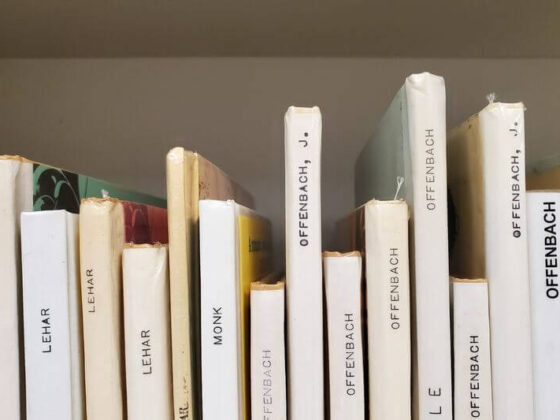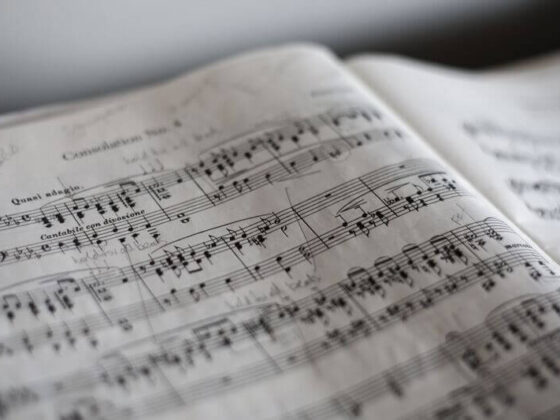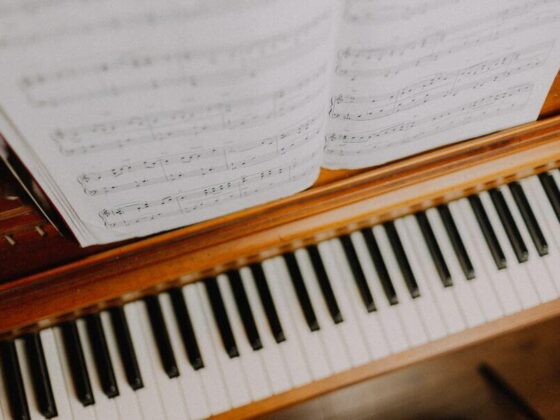Clair de Lune remains one of Debussy’s most well-known works. You might not be familiar with the title, but you will immediately identify it once you hear it. The unique emotion evoked by this classic romantic tune gives it a distinct feel. In addition, the structure, rhythm, and popularity of this composition make it appealing for pianists to learn and master it. But, the question that pianists ask often is if Clair de Lune is hard to play.
Clair de Lune is a reasonably difficult piece to play. The critical factor is to play the rhythm correctly and hold the notes for just the right amount of time. The song is above grade eight in terms of difficulty, making it suitable for intermediate and more advanced players.
Debussy’s music has been instrumental in the transition of Romantic music from the nineteenth to the twentieth century. Clair de Lune in C# is the third and most recognized movement of Suite bergamasque. The title means Moonlight and got inspiration from Verlaine’s poem. This iconic melody was officially released in 1905 after a few variations and has featured on several soundtracks ever since.
Clair de Lune seems to be appropriate for intermediate to advanced players who can understand and analyze the structure and technique of this composition. The primary technique used is playing in thirds and having advanced tied notes.
Most pianists would find the beginning section relatively manageable, but the middle section might come to them as a nightmare. The fast arpeggios and the runs are challenging to grasp without adequate practice and proper technique. However, with practice and the tips provided at the end of this article, you will also be able to play this masterpiece smoothly.
Looking for a fun & easy way to learn the Clair de Lune?
Skoove offers interactive piano lessons that work with all pianos and keyboards!
Try it now with a 7-day free trial
What Level Is Clair de Lune?
Clair de Lune is grade ten (Henle five) for the RCM level. At the same time, the ABRSM level is eight. The melody requires proper technique and experience to be played flawlessly. Even an intermediate player might find it challenging during some sections of the piece.
Most pieces of music are given a certain level in terms of their difficulties. RCM levels go up to a score of ten. A score of eight reflects solid understanding and proficiency in music.
ABRSM has eight as its maximum score. Meaning that a song with level eight (ABRSM) would require years of experience to play perfectly.
Clair de Lune by Claude Debussy touches the highest levels for both standards. Signifying that it is not an easy song to learn without a deep understanding of music and the instrument. Years of experience and proper technique are necessary to play this classical tune in front of an audience.
Is Clair de Lune Harder Than Fur Elise?
Fur Elise has an ABRSM level of five, while Clair de Lune scores eight on the same scale. Fur Elise is an early intermediate song, and Clair de Lune is a late intermediate to an early advanced level tune making it harder than Fur Elise.
Beethoven’s Fur Elise is one of the most recognized piano songs, and every pianist has probably come across learning the melody at one point in their lives. Although it’s not entirely a beginner song, with good practice, you would be able to play this masterpiece within a few weeks if you have some prior experience with the piano.
However, in the case of Clair de Lune, you’d need much more effort and patience with the same experience with the piano. Therefore, it’s advisable to take on Clair de Lune once you can play Fur Elise perfectly.
If you’d like some beginner song recommendations to build up your piano skills, check out these 11 easy classical piano songs for beginners.
You’d enhance your technique and skill required for Clair de Lune once you can comfortably play songs with slightly lower difficulty levels, such as Fur Elise.
How Long Does It Take To Learn Clair de Lune?
To play Clair de Lune decently, a beginner player would require 2-3 years of playing, while an intermediate player could learn it within a few weeks of focused practice. You can learn the beginning section quickly, but the difficulty progresses along with the song.
Clair de Lune is not an easy piece to play for beginners. And, it is difficult to come up with a definite period it may take for you to learn the original song. Multiple factors and your determination can decide how long it takes for you to play this melody.
If you can play the piano on about a grade six standard, you can pick up learning Clair de Lune. It would be challenging, but this shouldn’t demotivate you. Anything is possible, and the joy you feel when you perfectly play it will be worth your effort and time.
How To Learn Clair de Lune As a Beginner?
Clair de Lune is one of the most recognized and beautiful pieces on the piano. Not only is it peaceful to listen to, but it is also soothing to play on the piano.
If you’re a beginner, the following tips will be beneficial in learning Clair de Lune faster.
Get Help From YouTube Tutorials
YouTube tutorials are a great way to begin learning a song for free! You’ll find multiple videos which take you on a step-by-step journey to learn a challenging song. Consequently, engaging channels teach by interacting and providing tips on other areas.
You can observe and learn from the hand techniques of professional pianists playing in the video.
Use a Piano Learning App
Multiple apps are available that assist in learning the piano. Using an app is best for beginners and people who want to perfect each note. In addition, most apps can teach music theory and the piano in a fun way, for example, through flashcards and facts.
Apps such as Skoove, Flowkey, and Yousician have Clair de Lune in their curriculum, so signing up for one of those apps and learning Clair de Lune with the support of the app is definitely a good option. They all have a proper structure of videos and learning tools designed for solid learning.
Apps are a one-stop platform since you can find the music sheets, metronome, and pace yourself altogether in one place.
Follow Online Classical Piano Courses
Following an online course can do magic for your piano playing. If you’re looking to take your skills to the next level, feel comfortable with online training, and can afford it, then online courses will make sure you come out a better piano player.
Courses such as ArtistWorks understand the art of teaching piano and design their lessons to teach you through their curriculum effectively. You will also find Clair de Lune in this course.
Check out my full review of the ArtistWorks classical piano course.
Moreover, you can choose what’s comfortable for you and follow the direction provided without getting distracted.
Work with a Piano Instructor
Hiring a piano instructor has multiple benefits, especially in the long run. First, a piano instructor will understand you in person and then teach you according to your learning abilities.
It’s beneficial for a professional to look over while you practice correcting your mistakes and techniques. In addition, a piano instructor can keep you motivated and on track for your goals.
A piano instructor can make learning Clair de Lune easier by helping you through each step and teaching the correct technique.
Learn a Simplified Version
Simplified versions of most classical songs are much easier to learn and are still recognizable. These arrangements usually have fewer bass notes and focus solely on the melody.
You can find and learn a simpler version of Clair de Lune if you want to enjoy the melody or get familiar before learning the original version.
I highly recommend this simplified sheet music of Clair de Lune that you can find on Amazon. It doesn’t have any sharps or flats, and the difficulty level is perfectly manageable for a beginner pianist.
Break the Piece Into Small Chunks
Take it slow. You will memorize and play better by breaking the entire song into smaller sections.
Playing the intro perfectly for Clair de Lune is a good start. As things get challenging, make smaller milestones for yourself.
These will keep you motivated, and you’ll memorize the composition better.
Give It a Break
If learning Clair de Lune seems to be tough, and you’re not in a hurry, give it a break for 2-3 days. Then, you can practice something else that is less challenging to tone your technique and gain confidence.
Once you sit back to play Clair de Lune after a break, chances are you might be shocked to find yourself being able to do things you couldn’t do previously. One step back, two steps forward.
Bottom Line
Clair de Lune is a fairly advanced level (grade ten RCM) classical song and requires years of playing and a deep understanding of music to play perfectly. However, nothing is impossible, and beginners can play it with practice and patience.
It would be a great challenge and might even take more than two years for absolute beginners and a few weeks for intermediates.













1 comment
It really depends on what you really expect from this piece. As a beginner, it might be really hard to grasp the concept of its structure, form and style, and some technical difficulties (especially the infamous middle section). It also may cause severe hand injury if someone tries to play it without proper technique. You MIGHT be able to learn the notes, but at the cost of lots of time and effort, and it won’t get you the result you want to hear (unless you are extremely talented, in that case this comment isn’t for you).
It would be really snobish to say less advenced level pianists can’t learn it, but only with proper guidance from a teacher, who knows the student’s potential and abilities. A teacher also might help to avoid hand injury. Using online tutorials might give some basic instructions, but in the end you won’t get feedback, which is crucial to a beginner pianist.
Before you start to learn it, I would definitely suggest to do some research on a few things: the baroque suite, impressionism, and Debussy himself. Listen to the entire Bergamasque suite, it worths those 20 minutes (my favorite is the Prelude, which i interpret as a sunny contrast to the silver moonlight). Also if you are not familiar with Debussy, prepare with 2-3 preludes (easier ones are the Footprints in the snow, The girl with the Fluxen hair, and The sunken cathedral). You can prepare with playing arpeggios with a very relaxed hand, and a very light touch to the piano. Learning the notes is one thing, but mastering the tone is like mixing unique pastel colours. It takes time, effort, and lots of practice. I would suggest for the absolute beginner to write it somewhere as a goal to work towards, start with small steps, learning a few movements from baroque suites, easier Debussy preludes to grasp the style, and maybe a few Chopin nocturnes to make yout tone more light, sensitive. It will make the learning process less of a struggle, and more enjoyable.